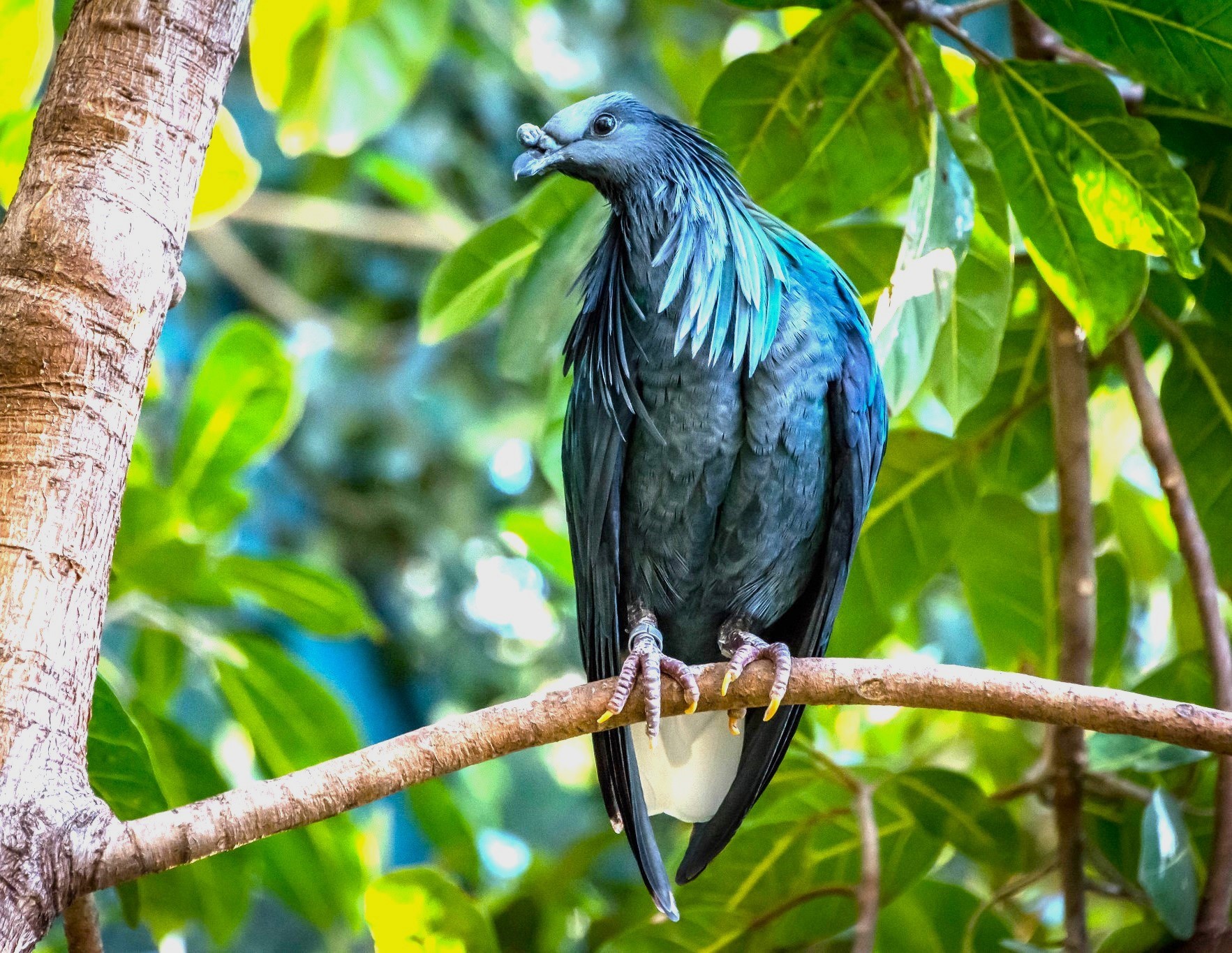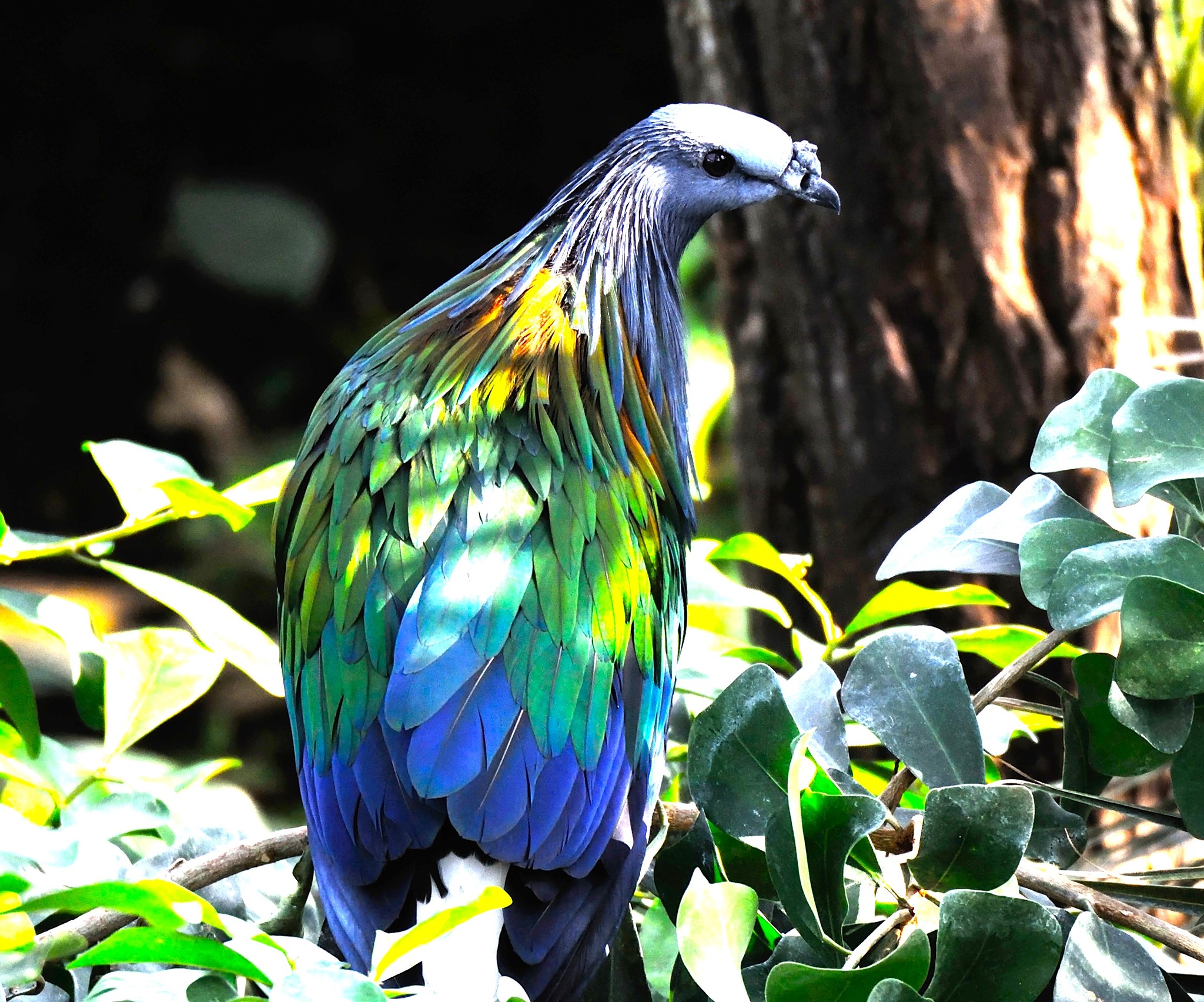The Nicobar pigeon, also known as the Nicobar dove, is a striking and colorful bird native to the Nicobar Islands, located in the eastern Indian Ocean. Renowned for its iridescent plumage, the bird displays a dazzling array of metallic greens, blues, and bronzes that shimmer in the sunlight. Unlike many other pigeon species, the Nicobar pigeon has a unique, elongated neck and a relatively short tail, which adds to its distinctive appearance.

This bird is typically found in dense forests and coastal mangroves, where it forages for seeds, fruits, and small invertebrates. It is a ground-dwelling species, preferring to search for food on the forest floor rather than in the trees. The Nicobar pigeon is also known for its strong flying abilities, which enable it to travel between islands in search of food and suitable nesting sites. Despite its vibrant appearance and fascinating behavior, the Nicobar pigeon is considered near-threatened due to habitat loss and hunting pressures in some areas of its range.






Breeding for the Nicobar pigeon involves constructing a simple nest of twigs in trees or shrubs, where the female typically lays a single egg. Both parents share the responsibility of incubating the egg and caring for the chick once it hatches. Conservation efforts are essential to protect this beautiful species, as its population continues to face threats from human activities and environmental changes. Preservation of their natural habitats and the implementation of protective measures are crucial for ensuring the survival of the Nicobar pigeon for future generations to appreciate and enjoy.